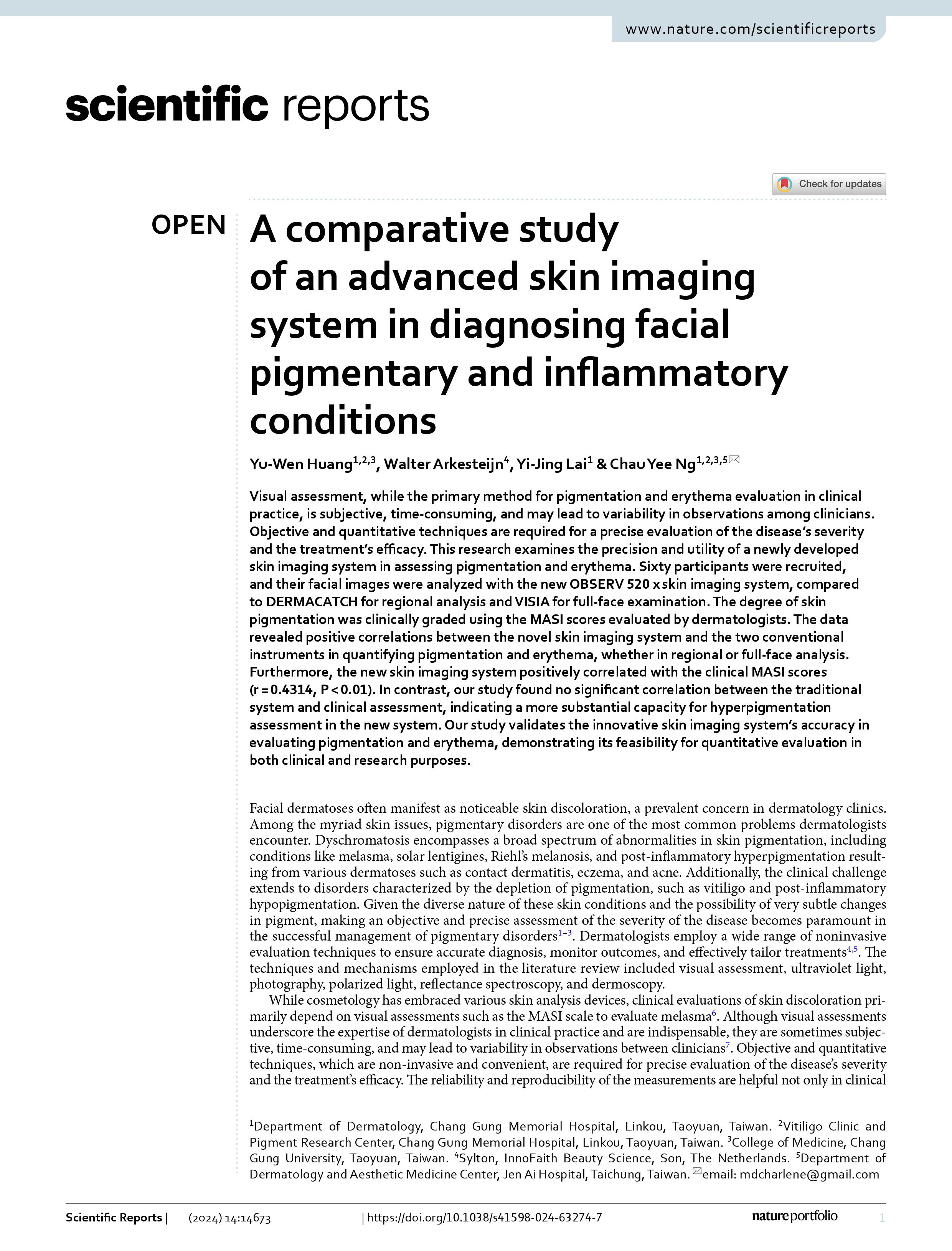Publications
- Home
- Publications
- Research Publications
- A comparative study of an advanced skin imaging system in diagnosing facial pigmentary and inflammatory conditions
A comparative study of an advanced skin imaging system in diagnosing facial pigmentary and inflammatory conditions

Visual assessment, while the primary method for pigmentation and erythema evaluation in clinical practice, is subjective, time-consuming, and may lead to variability in observations among clinicians. Objective and quantitative techniques are required for a precise evaluation of the disease's severity and the treatment's efficacy. This research examines the precision and utility of a newly developed skin imaging system in assessing pigmentation and erythema. Sixty participants were recruited, and their facial images were analyzed with the new OBSERV 520 x skin imaging system, compared to DERMACATCH for regional analysis and VISIA for full-face examination. The degree of skin pigmentation was clinically graded using the MASI scores evaluated by dermatologists. The data revealed positive correlations between the novel skin imaging system and the two conventional instruments in quantifying pigmentation and erythema, whether in regional or full-face analysis. Furthermore, the new skin imaging system positively correlated with the clinical MASI scores (r = 0.4314, P < 0.01). In contrast, our study found no significant correlation between the traditional system and clinical assessment, indicating a more substantial capacity for hyperpigmentation assessment in the new system. Our study validates the innovative skin imaging system's accuracy in evaluating pigmentation and erythema, demonstrating its feasibility for quantitative evaluation in both clinical and research purposes.
FAQ Classification
Related FAQ
- From zero to one: Recent advances in the pathogenesis, diagnosis, and treatment of vitiligo.
- Skin Interstitial Fluid and Plasma Multiplex Cytokine Analysis Reveals IFN-γ Signatures and Granzyme B as Useful Biomarker for Activity, Severity and Prognosis Assessment in Vitiligo
- Targeting the elevated IFN - γ in vitiligo patients by human anti - IFN - γ monoclonal antibody hampers direct cytotoxicity in melanocyte
- Pathogenic autoantibodies to IFN-γ act through the impedance of receptor assembly and Fc-mediated response
- Feasibility of Oral Tranexamic acid (TA) for Vitiligo Patients with Melasma
- A comparative study of suction blister epidermal grafting and automated blister epidermal micrograft in stable vitiligo
- Efficacy and safety of automated epidermal micrograft in patients with stable segmental and nonsegmental vitiligo
- Feasibility of High-Cellular-Resolution Full-Field, Artificial-Intelligence-Assisted, Real-Time Optical Coherence Tomography in the Evaluation of Vitiligo: A Prospective Longitudinal Follow-Up Study.
- Association of multiple sclerosis with vitiligo: a systematic review and meta- analysis
- Vitiligo associated with polycaprolactone-based collagen stimulator filler

